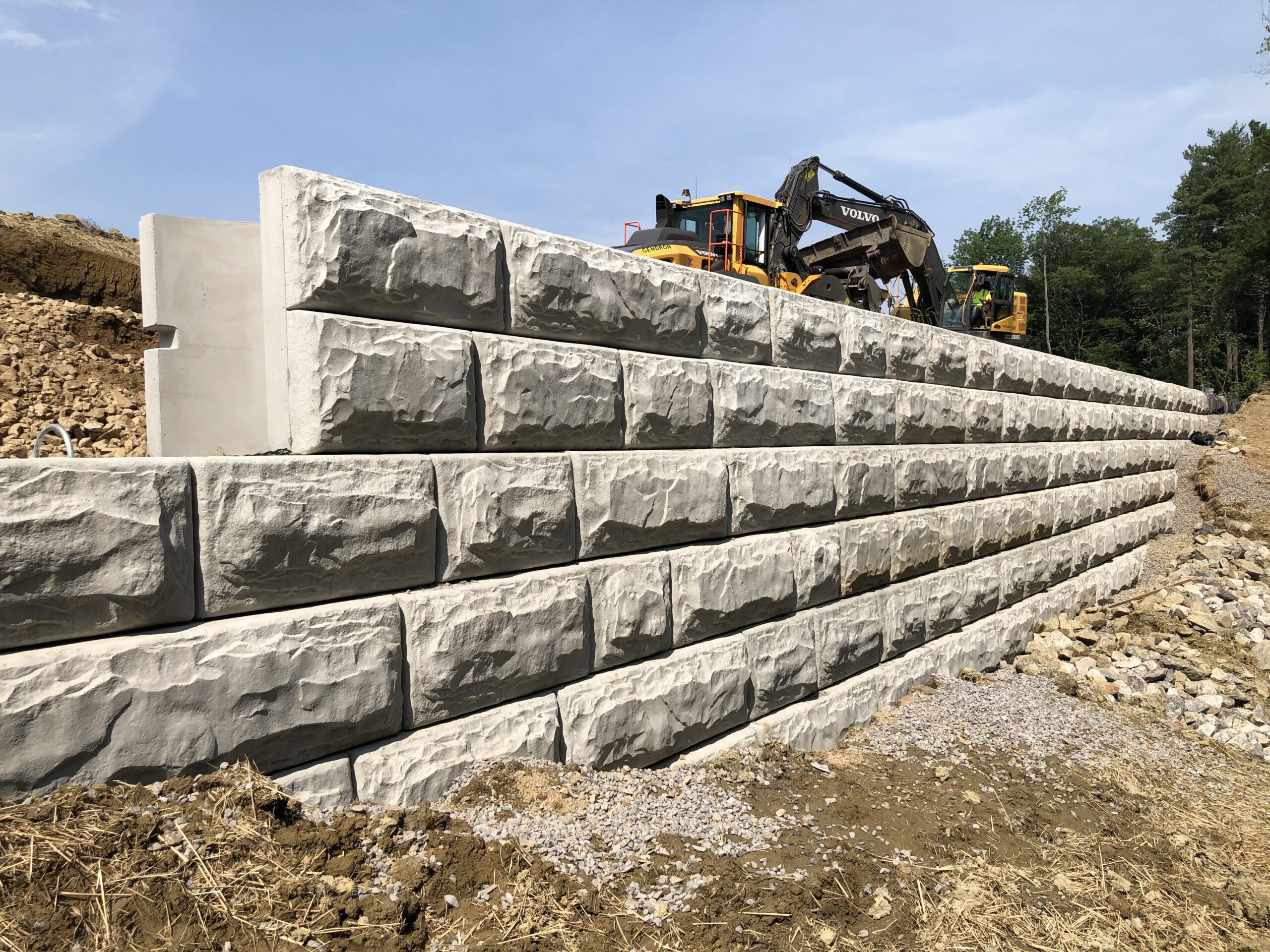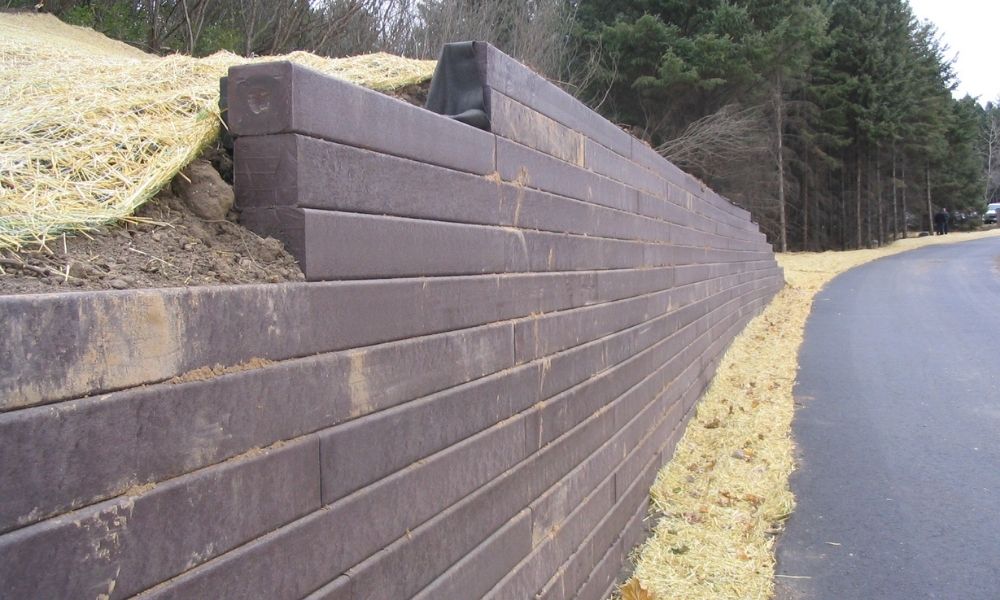Easy-to-follow guide to installing OKC Precision Retaining Walls on a slope
Easy-to-follow guide to installing OKC Precision Retaining Walls on a slope
Blog Article
Trick Considerations for Structure Reliable Retaining Walls in Your Backyard
When you're taking into consideration constructing a keeping wall surface in your lawn, it's vital to believe about several crucial factors. The wall surface's objective, the materials you'll make use of, and the certain soil problems can all impact its performance and longevity.
Comprehending the Purpose of Your Retaining Wall
When you think of building a maintaining wall, consider its primary objective: stabilizing soil and stopping disintegration. Retaining walls supply important assistance for sloped landscapes, aiding to maintain soil stability. You'll locate they're important in areas where water drainage could otherwise remove soil, leading to expensive repair services and landscape damages.
By holding back earth, these walls produce level surface areas for gardens, patio areas, or paths. This not just enhances your yard's appearances but likewise promotes far better drainage, minimizing water pooling in undesirable areas. If you're dealing with high inclines, a well-constructed retaining wall can prevent landslides, ensuring safety for you and your home.
Eventually, recognizing the purpose of your retaining wall will certainly direct your layout decisions and help you develop a practical, durable framework that fulfills your requirements. So, take a minute to evaluate your landscape; it'll repay in the long run.
Choosing the Right Products
When selecting materials for your retaining wall surface, you'll want to take into consideration durability, aesthetics, and cost. Each variable plays an important role in guaranteeing your wall surface stands the test of time while looking wonderful and suitable your spending plan. Let's explore how to make the ideal options for your project.
Product Durability Variables
Picking the appropriate products is important for the durability and performance of your retaining wall surface, considering that their toughness directly influences the wall's capacity to withstand ecological tensions. Beginning by considering your regional climate; products like concrete and stone withstand wetness and temperature variations well. If you live in a location prone to hefty rains, select products with good drain properties, like crushed rock or permeable blocks, to stop water accumulation.
Some products carry out far better in particular dirt kinds, so it's vital to match them accordingly. Choosing long lasting materials assurances your retaining wall surface stands solid, protecting your yard for years to come.
Aesthetic Style Options
Resilient materials not only assure your retaining wall's architectural stability yet also play a crucial duty in its aesthetic appeal. Don't fail to remember about the wall surface's shape-- bent walls can create a softer look, while straight lines can feel extra structured. By meticulously picking materials that line up with your aesthetic vision, you'll boost your outdoor area while guaranteeing your wall stands solid against the elements.
Cost-Effectiveness Analysis
Picking the right materials for your retaining wall isn't practically appearances; it's additionally necessary for your budget. When selecting materials, think about both upfront expenses and long-lasting durability. As an example, concrete blocks may be pricier originally, yet their longevity can save you cash on fixings. On the various other hand, hardwood can be extra affordable but might require replacement quicker.
Do not fail to remember to consider upkeep prices as well (OKC Precision Retaining Walls). Some materials, like all-natural stone, can add appeal and require less maintenance, while others may need regular therapies
Inevitably, consider the advantages and disadvantages of each alternative against your spending plan and the wall's designated objective. Spending wisely in products now can avoid pricey problems down the road. Select materials that stabilize cost and efficiency effectively.
Evaluating Soil Conditions and Water Drainage
As you begin your project, examining dirt conditions and drainage is important for the success of your retaining wall. Beginning by checking out the sort of dirt in your yard. Sandy dirt drains pipes well however lacks stability, while clay soil can maintain dampness, resulting in press on your wall. Check the dirt's dampness content by digging a small opening and observing just how promptly it dries out.
Next, analyze the incline of your lawn. If water normally flows towards your wall surface, you'll need to carry out a drainage solution to avoid erosion and stress accumulation. Think about setting up perforated pipelines or crushed rock backfill behind the wall surface to help with drainage.
Lastly, observe any nearby trees or plants; their roots can affect soil security. By comprehending your dirt problems and applying appropriate water drainage, you'll develop a strong foundation for your retaining wall that stands the test of time.
Adhering To Local Building Regulations
Before you start building your retaining wall, you need to research study local guidelines to assure compliance. It's crucial to recognize what allows you need to get, as this can conserve you from expensive penalties or needing to redesign your work. Taking these actions seriously will help you develop a safe and effective framework.
Research Local Rules
Recognizing local regulations is crucial when preparing your retaining wall surface task, specifically because developing codes can vary greatly by place. Look for standards on wall height, materials, water drainage systems, and structural honesty. By doing your study upfront, you can guarantee your retaining wall fulfills all necessary codes and blends perfectly right into your backyard.
Obtain Necessary Licenses
Once you've looked into local laws, the next action is to obtain the necessary authorizations for your retaining wall surface project. This procedure warranties your wall conforms with building codes and safety standards. Get to out to your regional structure authority to figure out what permits you need. They might need particular plans or engineering analyses, specifically for larger walls. Be prepared to submit comprehensive illustrations, including measurements and materials. Don't forget to examine if your job affects drain or neighboring residential or commercial properties, as these elements might require additional authorizations. Safeguarding the appropriate approvals can save you from expensive fines or needing to dismantle your wall later. Remember, following the regulations now will certainly bring about a smoother building and construction experience.

Planning the Style and Aesthetics
As you start planning the design and visual appeals of your retaining wall, take into consideration just how it will harmonize with the bordering landscape. Consider the products you'll make use of-- rock, brick, or concrete-- and how they'll enhance your home's design and the natural components in your lawn. Choose shades and textures that blend flawlessly with existing functions like patios, paths, or yards.
Next, envision the wall's form and height. Rounded walls can soften a stiff landscape, while straight lines may communicate a more modern-day appearance. Do not neglect to integrate plants and greenery around the wall surface for a natural touch; this can boost its helpful hints allure and incorporate it right into the atmosphere.
Lastly, bear in mind functionality. Your design needs to not only be aesthetically pleasing but additionally serve its function efficiently. By attentively preparing these components, you'll create a preserving wall that boosts your yard's appeal while satisfying its architectural function.
Determining Elevation and Density Requirements
To build a sturdy retaining wall, you require to accurately calculate its elevation and density requirements based on the dirt problems and the elevation of the slope it will sustain. Begin by examining the incline's angle and the sort of soil, as different dirts exert varying amounts of stress.
For walls over four feet high, think about a thickness of a minimum of 12 inches. If the wall surface is taller, boost the density proportionally to preserve security.
Following, determine the blog here height of the wall surface by determining the vertical distance it requires to preserve. For every foot of height, you should commonly plan for a density of one-third of the wall's elevation.
Always bear in mind to make up extra variables like water drainage and backfill, which can influence your wall surface's layout. Correct calculations currently guarantee your retaining wall surface stands strong and lasts for several years to find.
Maintenance and Longevity Considerations
While preserving your retaining wall might look like a reduced concern, overlooking it can cause substantial concerns with time. Normal examinations are vital; check for cracks, protrudes, or any kind of indicators of water damages. Attending to these issues early can conserve you from costly repairs down the road.
Maintain an eye on drain systems, as well. Clogged drains pipes can create water to develop up, applying pressure on your wall and endangering its security. Clear debris and guarantee correct flow to keep durability.
You may likewise intend to reflect on securing your wall surface to secure it from wetness and weathering. Depending upon the product, this may require reapplication every couple of years.
Finally, landscaping around your wall surface can support its stability. Prevent growing large trees nearby, as their roots can threaten the structure. With positive maintenance, your retaining wall can offer you well for many years to come.

Frequently Asked Questions
Can I Develop a Retaining Wall by Myself, or Should I Hire a Specialist?
You can certainly develop a retaining wall surface on your own if you have the right tools and knowledge. Nevertheless, working with a specialist assurances it's done appropriately, specifically for larger or more intricate frameworks. Consider your ability level prior to deciding.
What Are one of the most Usual Blunders Made When Structure Retaining Walls?
When constructing retaining walls, you may ignore proper drainage, avoid utilizing the right products, or forget support. These usual errors can cause architectural failure, so take your time and strategy thoroughly to avoid issues.
Exactly how Do I Know if My Retaining Wall Requirements Support?
You'll understand your retaining wall surface requires reinforcement if you observe splits, leaning, or bulging. Look for water merging behind it or soil erosion near the base. Address these signs top article immediately to avoid further damage.
What Plants Appropriate for Landscaping Around a Retaining Wall?
When landscape design around a keeping wall surface, think about utilizing low-maintenance plants like succulents, decorative turfs, or slipping ground covers - OKC Precision Retaining Walls. They'll flourish in those conditions and add beauty while stopping dirt erosion around your wall
How Can I Avoid Erosion Around My Retaining Wall?
To avoid erosion around your retaining wall surface, you can grow ground cover, usage mulch, and install water drainage systems. On a regular basis check for water accumulation and adjust landscape design to reroute overflow away from the wall surface.
Report this page